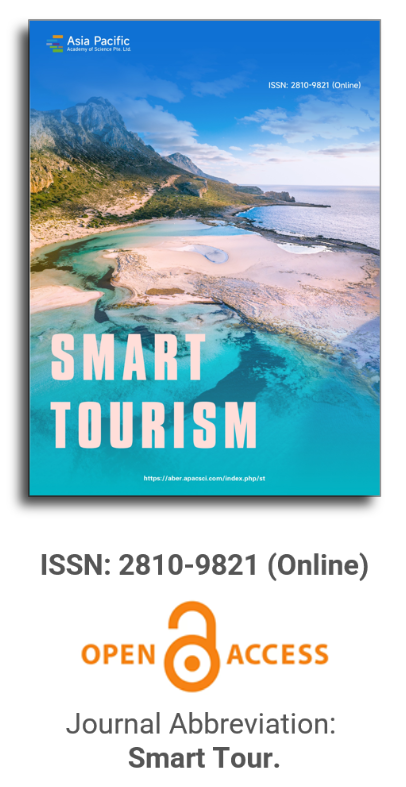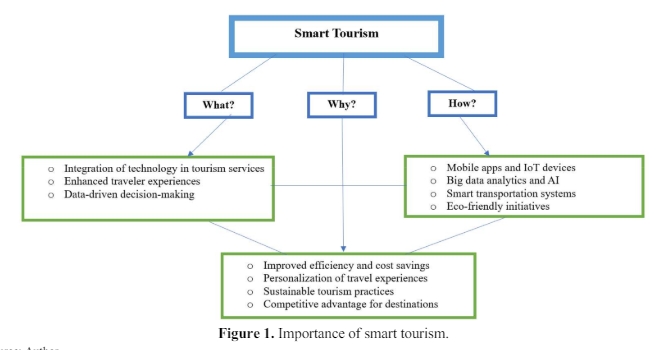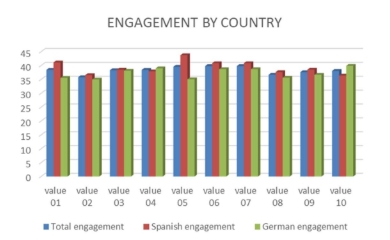


This issue will bring you the latest exploration of smart tourism destinations. This issue analyzes the development status and governance of smart tourism destinations in detail through case analysis and provides targeted suggestions to promote the development of smart tourism destinations with the help of the four main attributes of smart tourism destinations. In addition, this issue also explores the evaluation of urban smart tourism competitiveness and the relationship between virtual cities and physical cities, which reveal the influence and value of smart tourism.
Issue release: 30 April 2021
In recent years, Buenos Aires has become one of the main destinations in Latin America. Promoted as the cultural capital of the region, attractive places to stroll around as well as cultural experiences are advertised to attract tourists. On the other hand, the practice of tourism has changed and the current traveler uses virtual tools that help him to know and interact with a tourist destination. Under these premises, this paper observes the role of the virtual and the physical/experiential in the construction of Buenos Aires as a tourist destination. In this sense, the question arises: What city is constructed by the websites, social networks and the tours that pass through it? How is this city physically and virtually practiced? Through the ethnographic and netnographic study that includes the inquiry of virtual media linked to local tourism and the observation of tours that travel through the city, the interaction of the physical and the virtual in tourist Buenos Aires will be analyzed.
Issue release: 30 April 2021
From the perspective of planning and managing smart destinations, this study presents an exploratory analysis of the present situation and possible future developments of the municipality of Santa Maria Huatulco (Oaxaca, Mexico). It starts with how smart tourism destinations are conceptualized and shows how this idea evolved from the idea of smart cities. Following an explanation of the technique, the four primary attributes of smart destinations—innovation, technology, sustainability, and accessibility—are next discussed. The presentation of two success stories—Dubai, United Arab Emirates, and Tequila, Mexico—follows, highlighting the measures taken by these travel hotspots to guarantee the contentment of both locals and tourists. Subsequently, the four aforementioned criteria are used to qualitatively examine the municipality of Santa María Huatulco and its current situation. The paper concludes with some observations that go over the primary areas this municipality should focus on improving in order to become a smart tourist destination, along with the advantages of doing so.
Issue release: 30 April 2021
In 2010, Zhenjiang city of Jiangsu Province took the lead in creatively proposing the concept of “smart tourism”, which is a new proposition. The economic and resource situation of tourism industry in Jiangsu Province was analyzed, and then a SWOT analysis of the current situation of tourism industry in Jiangsu Province was also analyzed. Then, based on the perspective of tourists, six main influencing factors were selected, and SPSS software was used to analyze the data. From the results of factor analysis, tourism auxiliary services explain the 82.579% influencing factors. Finally, according to the factor score data, K-means clustering was conducted on 13 cities in Jiangsu Province, and it can give some suggestions for the development of intelligent tourism industry in various cities.
Issue release: 30 April 2021
This paper aims to analyze the process of tourism governance based on innovation in the use of ICT as a factor in the development of a smart tourism destination, and its relationship with public-private networks. The empirical analysis refers to the case study of the city of Florianopolis, Santa Catarina, Brazil. Therefore, the following methods were used: literature review, documentary analysis, in-depth and semi-structured interviews with tourism agents of the destination, and content analysis. The Atlas TI 8 software was used for data processing, which enabled a more detailed analysis in the understanding of the object of study of the research, through networks and conceptual maps in the cross-referencing of information. The results show that public-private relationships based on trust, joint decision-making, informal structures, strategic consensus, and the use of ICTs, seem to have a positive impact on the level of development and innovation in the smart tourism destination.
Issue release: 30 April 2021
Applying networking and connectivity to empower human resources and infrastructure towards the formation of sustainable regional service ecosystems is becoming increasingly important for well-being of people within and outside society to meet social challenges. However, the concepts of smart city (SC) for residents/citizens and smart tourism destination (STD) for visitors/tourists are not yet well coordinated. Therefore, this research provides a framework for regional innovation through “smartization”, which is common to both SC and STD. The framework is constructed from the perspective of the service ecosystem and applied by analysis of four case studies: The framework is constructed from the perspective of the service ecosystem and applied by analysis of four case studies: two representative smart city projects (“urban policy”-directed type) (Toyama and Aizu-Wakamatsu), and two advanced tourism projects (“resource integration”-directed type) in Japan and Slovenia. Based on these examples, the framework clarifies the macro aspects of human resources and infrastructure’s roles with data platform and presents a smartization model with service layers and dynamic spiral through integrating to the concept of Smart Tourism City (STC): a city that aims to improve/create QoL (quality of life) and QoE (quality of experience) for citizens and tourists. It is expected that further STC-concept-based research towards building the quantitative model will lead to concrete insights into the typology of holistic servitisation of each city or region.
Issue release: 30 April 2021
Smart tourism destinations innovate using technology as a management and planning tool, providing information for managers, community and tourists. The search for sustainable development occurs through participatory management, in which mobility, accessibility, and quality of life are allied to experiences in the destination, in order to satisfy residents and tourists. Therefore, this work aims to evaluate Curitiba and Malaga, in a comparative way, as an intelligent tourist destination, based on criteria of virtual accessibility. To this end, use was made of qualitative, descriptive and exploratory methods whose main data collection techniques were: Bibliographic and documental research, recording by means of an investigation script on tourism websites. The analyses were carried out by means of a theoretical-practical pairing. It was observed that both cities, Curitiba and Malaga, are developing actions with the objective of being recognized as intelligent tourist destinations, as to the criteria of virtual accessibility.
Issue release: 30 April 2021
The objective of this research is to analyze the Smart Tourism Destination [STD] initiatives present in the city of Natal-RN, Brazil. The study is based on the model of State Society for the Management of Innovation and Tourism Technologies, Spain, in which there are four dimensions to be developed in destinations in order to consolidate as a STD: Innovation, Technology, Universal Accessibility and Sustainability. For data collection, a semi-structured interview script was used, with ten open questions, applied to managers and researchers from the public and private sectors of the city. A documental analysis of Natal’s Master Plan was also carried out, verifying elements of Accessibility and, to a lesser extent, notions of Sustainability and Innovation. The interviews showed that Natal has incipient Technology, Innovation and Accessibility initiatives, however, it still lacks a larger number of Sustainability projects in order to consolidate itself as a STD. Thus, it deserves attention from stakeholders in the sense of improving the initiatives and acting together so that the essential dimensions are evolved in the city.
Issue release: 30 April 2021
This paper collates and analyzes the ancient town tourism, tourism public service, ancient town tourism public service system and relevant research literature. It is found that Chinese scholars have begun to try to systematically study the ancient town tourism public service system, but the research on China’s ancient town tourism public service system has some problems, such as narrow research scope, theoretical research lagging behind practice, and then puts forward the direction that needs to be discussed in depth in the future.
Issue release: 30 April 2021
The tourism activity is becoming more competitive every day, the exponential growth of technology makes possible the improvement of communications between businesses and end customers, the emergence of new applications makes it easier for tourists to acquire services in an easier way. For this and many other reasons, the public administration in tourism developed countries such as Spain is committed to the certification of Smart Tourism Destinations (STD) with criteria related to accessibility, sustainability, governance, technology and innovation. This literature review uses basic tools of content analysis to classify information from documents, manuals and specialized articles in various databases, which seek to lay the foundations that serve as a reference for new tourism studies focused on this area, new for Ecuador, but not so much around the world. Portoviejo is a city recently declared Creative City by UNESCO, the same seeks to promote a new model of tourism management, which makes use of its cultural heritage, led by the gastronomic diversity, and in turn be able to enhance this development with the evolution towards an intelligent destination.

Prof. Hung-Che Wu
Nanfang College, Guangzhou
China
Indexing & Archiving
Asia Pacific Academy of Science Pte. Ltd. (APACSCI) specializes in international journal publishing. APACSCI adopts the open access publishing model and provides an important communication bridge for academic groups whose interest fields include engineering, technology, medicine, computer, mathematics, agriculture and forestry, and environment.


 Open Access
Open Access

.jpg)
.jpg)

.jpg)

